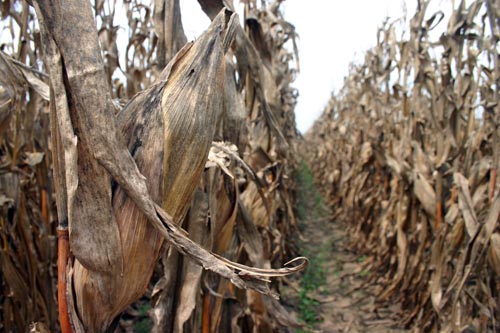
The Texas corn crop likely will come in a little below average with farms from the Central Texas area to the Red River taking a big hit from heat and drought.
“That area was probably the driest part of the state,” says David Gibson, Executive Director of the Texas Corn Producers Board in Lubbock. “Yields from Central Texas to the Oklahoma line will be below normal. In parts of the state, corn yields will be pretty good,” he says. “Most of the state will be average to a little above average.” Losses in some regions will be enough to drop overall state production a bit below average.
Gibson says High Plains corn farmers have just begun to cut corn and some early yields “were a bit disappointing. But as farmers get into later corn, production will pick up and be closer to expectations.”
He says harvest is ahead of last year, with about 25 percent of the expected 2 million acres for harvest already in the bin. “In the Northwest, around Dalhart, farmers have not started corn harvest yet,” he says.
“If we continue to get good weather, we’ll have a lot of corn out and will be well along the way to wrapping it up by the end of the week.”
Gibson says Texas farmers planted from 2.1 to 2.2 million acres this year and will harvest just a little less than that. He says 2 million acres seems a good estimate based on information from the National Agricultural Statistics Service, seed companies and farmers.
Gibson says Central Texas also had aflatoxin issues this season, not unusual with hot, dry growing conditions. “Some fields were plowed up and destroyed,” he says.
The state chemist office also worked with elevators to add more consistency to testing procedures. “We were hearing about sampling differences so the chemist’s office worked with inspectors to test and calibrate equipment. In some cases (aflatoxin) levels were too high; in some cases levels were too low.
“It’s hard to sample for aflatoxin because a probe can hit a hot spot in a load” and push the level above acceptable levels. “We need randomized sampling of a load to get better consistency.”
Gibson says many farmers who used new products (nontoxic strains of Aspergillus flavus) to reduce aflatoxin contamination were pleased with the results. He says research into new hybrids and production techniques also will help farmers reduce aflatoxin levels.
About the Author(s)
You May Also Like






